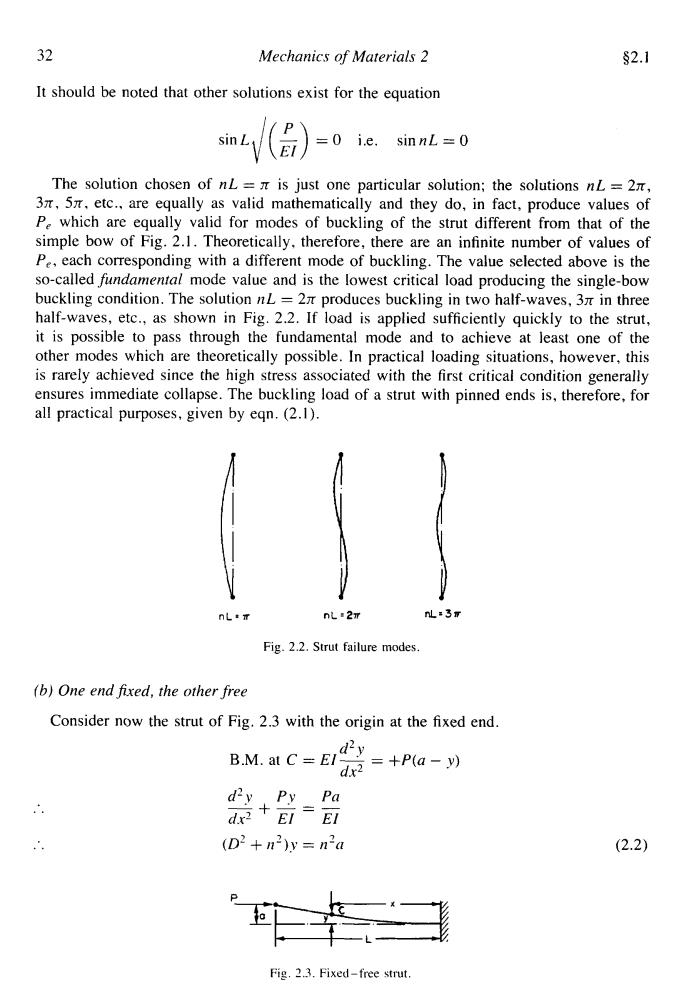正在加载图片...

32 Mechanics of Materials 2 $2.1 It should be noted that other solutions exist for the equation =0 i.e. sin nL=0 The solution chosen of nL=x is just one particular solution;the solutions nL=2n, 3,5x.etc.,are equally as valid mathematically and they do,in fact,produce values of Pe which are equally valid for modes of buckling of the strut different from that of the simple bow of Fig.2.1.Theoretically.therefore,there are an infinite number of values of Pe,each corresponding with a different mode of buckling.The value selected above is the so-called fundamental mode value and is the lowest critical load producing the single-bow buckling condition.The solution nL =2 produces buckling in two half-waves,3x in three half-waves,etc.,as shown in Fig.2.2.If load is applied sufficiently quickly to the strut, it is possible to pass through the fundamental mode and to achieve at least one of the other modes which are theoretically possible.In practical loading situations,however,this is rarely achieved since the high stress associated with the first critical condition generally ensures immediate collapse.The buckling load of a strut with pinned ends is,therefore,for all practical purposes,given by eqn.(2.1). nL:T nL:2T nL:3m Fig.2.2.Strut failure modes. (b)One end fixed,the other free Consider now the strut of Fig.2.3 with the origin at the fixed end. B.M.at C=EI d-y dx2 =+P(a-y) d2y Py Pa dx+El=El (D2+n2)y n2a (2.2) Fig.2.3.Fixed-free strut.32 Mechanics of Materials 2 92.1 It should be noted that other solutions exist for the equation The solution chosen of nL = T is just one particular solution; the solutions nL = 2~, 317, 517, etc., are equally as valid mathematically and they do, in fact, produce values of P, which are equally valid for modes of buckling of the strut different from that of the simple bow of Fig. 2.1. Theoretically, therefore, there are an infinite number of values of P,, each corresponding with a different mode of buckling. The value selected above is the so-called fundamental mode value and is the lowest critical load producing the single-bow buckling condition. The solution rzL = 237 produces buckling in two half-waves, IT in three half-waves, etc., as shown in Fig. 2.2. If load is applied sufficiently quickly to the strut, it is possible to pass through the fundamental mode and to achieve at least one of the other modes which are theoretically possible. In practical loading situations, however, this is rarely achieved since the high stress associated with the first critical condition generally ensures immediate collapse. The buckling load of a strut with pinned ends is, therefore, for all practical purposes, given by eqn. (2.1). nL=27r Fig. 2.2. Strut failure modes. (6) One endJiued, the other free Consider now the strut of Fig. 2.3 with the origin at the fixed end. .. .. Fig. 7.3. Fixed-free strut